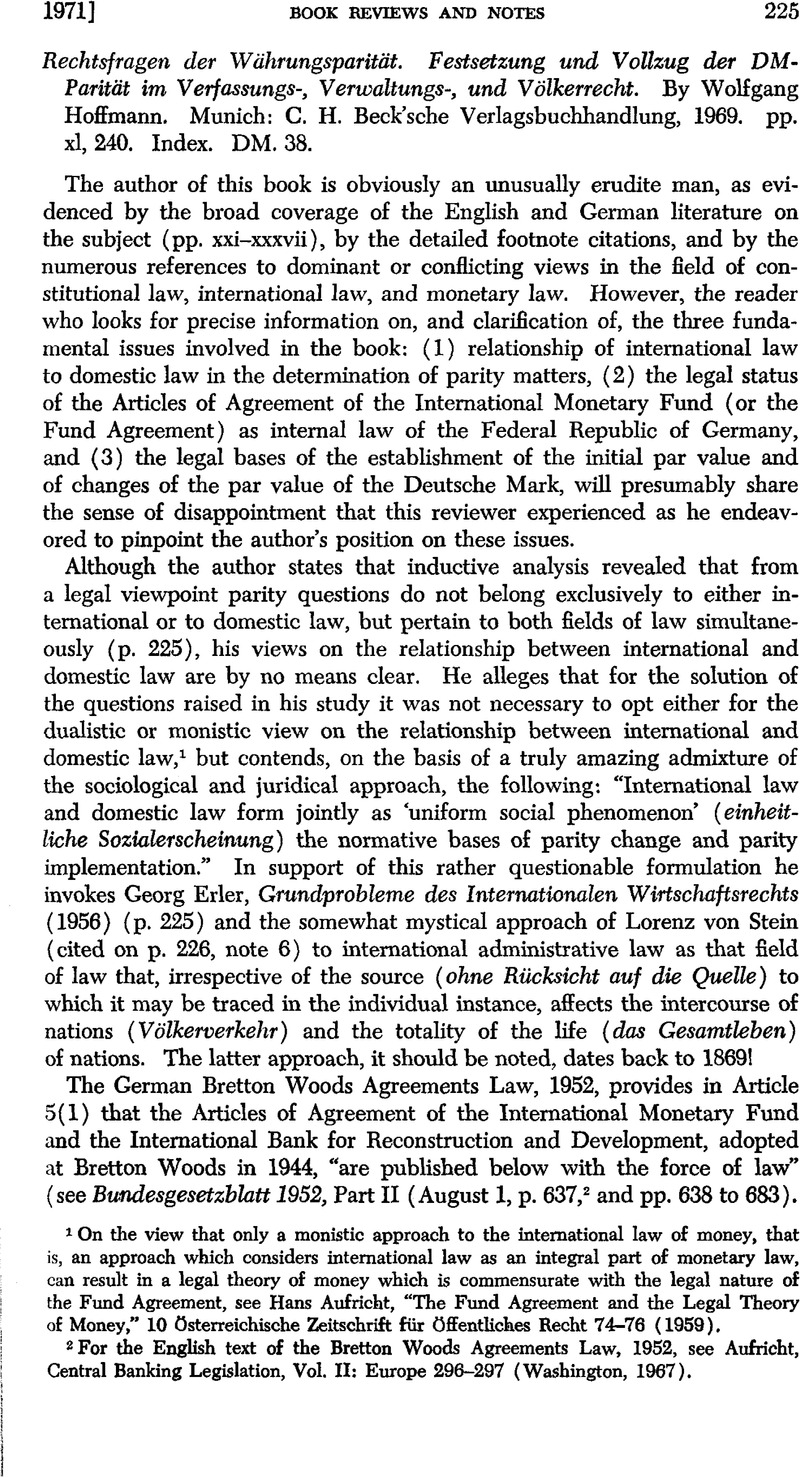No CrossRef data available.
Published online by Cambridge University Press: 28 March 2017

1 On the view that only a monistic approach to the international law of money, that is, an approach which considers international law as an integral part of monetary law, can result in a legal theory of money which is commensurate with the legal nature of the Fund Agreement, see Aufricht, Hans, “The Fund Agreement and the Legal Theory of Money,” 10 Österreichische Zeitschrift für Vffentliches Recht 74–76 (1959)Google Scholar.
2 For the English text of the Bretton Woods Agreements Law, 1952, see Aufricht, , Central Banking Legislation, Vol. II: Europe 296–297 (Washington, 1967)Google Scholar.
3 See on this point Aufricht, 61 A.J.I.L. 851 (1967).
4 For the text of the resolution, see IMF, Summary Proceedings, 1952, pp. 162–165.
To send this article to your Kindle, first ensure no-reply@cambridge.org is added to your Approved Personal Document E-mail List under your Personal Document Settings on the Manage Your Content and Devices page of your Amazon account. Then enter the ‘name’ part of your Kindle email address below. Find out more about sending to your Kindle. Find out more about saving to your Kindle.
Note you can select to save to either the @free.kindle.com or @kindle.com variations. ‘@free.kindle.com’ emails are free but can only be saved to your device when it is connected to wi-fi. ‘@kindle.com’ emails can be delivered even when you are not connected to wi-fi, but note that service fees apply.
Find out more about the Kindle Personal Document Service.
To save this article to your Dropbox account, please select one or more formats and confirm that you agree to abide by our usage policies. If this is the first time you used this feature, you will be asked to authorise Cambridge Core to connect with your Dropbox account. Find out more about saving content to Dropbox.
To save this article to your Google Drive account, please select one or more formats and confirm that you agree to abide by our usage policies. If this is the first time you used this feature, you will be asked to authorise Cambridge Core to connect with your Google Drive account. Find out more about saving content to Google Drive.